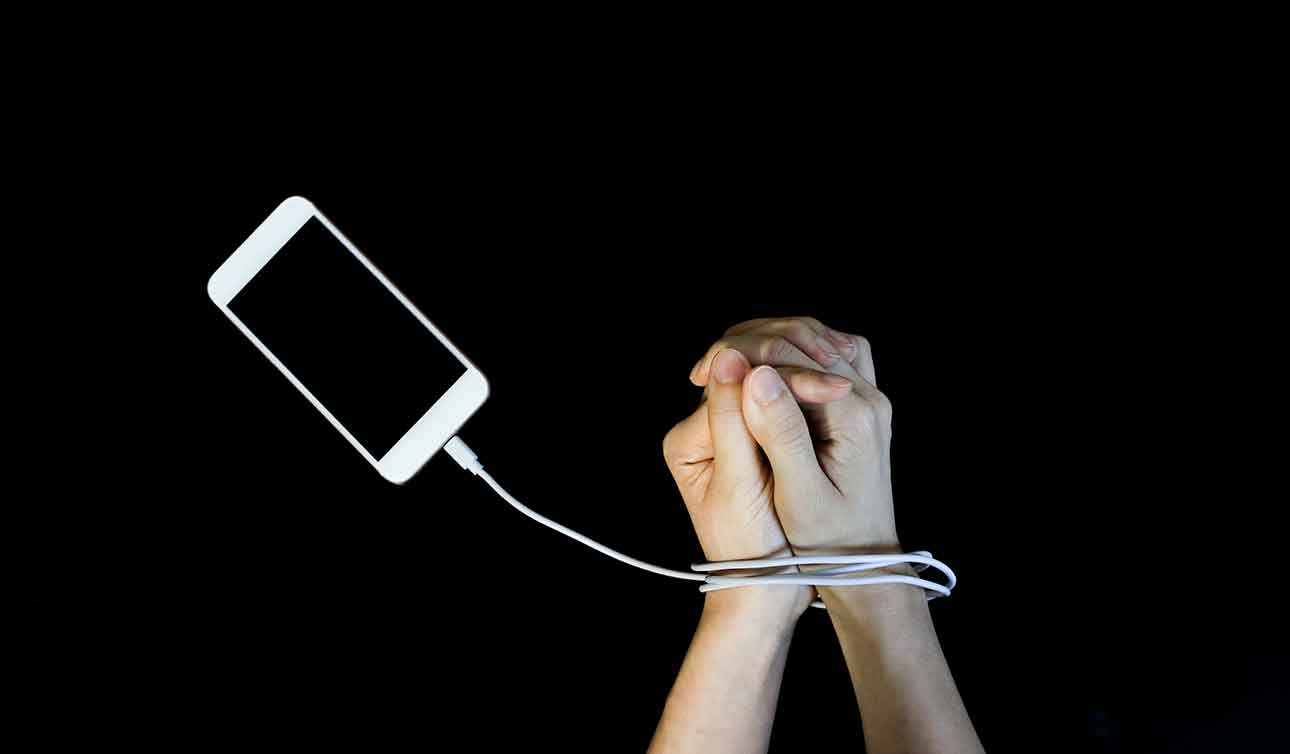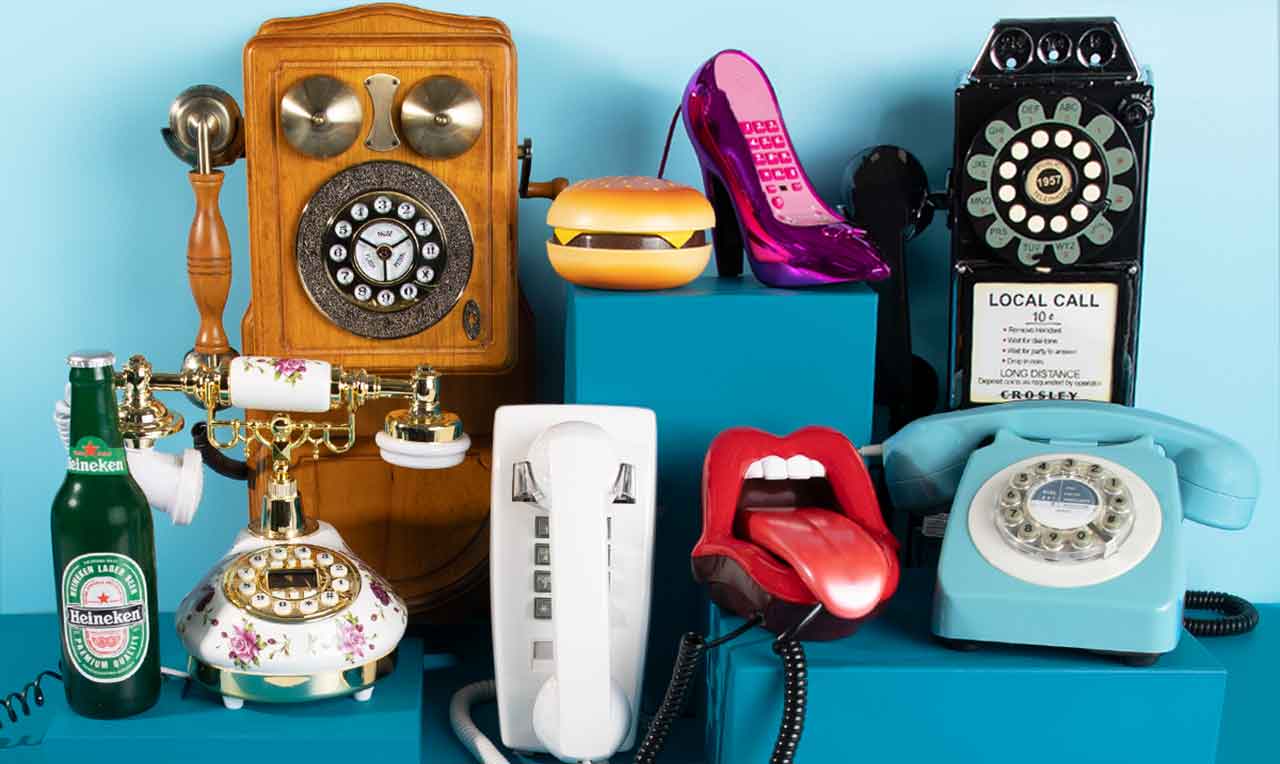Smartphone addiction and your health: what the science says

Mobile phones are everywhere in our society. Ninety-six percent of Americans have a cell phone, according to the Pew Research Center. Researchers have found that Americans over the age of 18 spent more than three hours per day in 2020 using their smartphones (an increase of more than 30 minutes compared to 2018). Others have pointed out that smartphone addiction appears to be a growing problem among young adults.
Let’s take a closer look at some of the reported health effects from heavy use of mobile technology.
Physical effects of smartphones.
There are multiple physical effects associated with using smartphones that we first covered in our article: 10 Years of Using a Cell Phone – ADD, Hunchback, Insomnia, Cell Addiction. Since we published that article in 2016, new research has come to light about the situation.
- Eye strain. One health research article published in 2020 found that the prevalence of DES (digital eye strain) in the community ranges from 22.3% to 39.8%. This increase may be linked to the COVID-19 pandemic because more people are using electronic screens to learn and communicate.
- Text neck and hand pain. A 2018 health research report reported, “musculoskeletal problems in neck and hand (predominantly thumb) can be seen in smartphone-addicted students.” Physically, the neck posture used when texting exerts significant pressure on the body. It can feel like the equivalent of 20 to 30 pounds on a person’s spine.
- Headaches. CNN has reported a study published in Neurology Clinical Practice (December 2020) that found smartphone use may make headaches worse based on a study of 400 people in 2020.
- Sleep problems. Researchers at King’s College London found a link between smartphone addiction and sleep problems in 2021. In particular, smartphone usage after 1:00 a.m. appears to have a more significant impact on sleep. Further, sleep disruptions may increase the risk for diabetes, cancer and obesity.
Physical effects from smartphone use are just the beginning of the story. There are also significant mental health effects to consider as well.
Mental health effects of smartphones.
Smartphone use may negatively affect your mental health in several ways.
- Relationship conflicts. A recent study, “Smartphones and Close Relationships: The Case for an Evolutionary Mismatch,” published in Perspectives on Psychological Science, found that 70% of people studied “reported that mobile phones frequently interfere in their relationships.” The same researchers also found the “pull of our phones may diminish immediate interactions and lead to conflict.”
- Reduced attention span. The ability of smartphone users to focus for long periods appears to be declining. Fortunately, there are ways to address this concern. For instance, focusing on a complex task like playing a musical instrument or writing for 30 minutes may help people develop the ability to focus for longer periods.
- Reduced happiness levels. A study of more than 400 adults, called “Unhappy and addicted to your phone? – Higher mobile phone use is associated with lower well-being” and published in Computers in Human Behavior, found that “Mobile phone use is negatively correlated with well-being, life satisfaction, and mindfulness.”
- Dependency. A research article called “Nomophobia: Impact of cell phone use and time to rest among teacher students” points out that nomophobia, an uncontrollable smartphone dependency, can lead people to sacrifice sleep and interpersonal relationships, as well as lose empathy.
Mental health is complex, and it is influenced by multiple factors. It is possible that poor mental health symptoms may be caused by factors unrelated to phone usage. Discuss mental health concerns with a qualified professional in your area, such as a therapist, to receive advice specific to your situation.
Ways to improve your health through habits.
Before making changes to your routines, please seek a qualified health professional’s advice. The following tips are meant to provide ideas and inspiration that may be helpful. Your specific health situation may require a different approach.
Changing your smartphone usage is easier when you use a habit framework. The following steps are inspired by James Clear, the best-selling author of “Atomic Habits.”
- Change the environment. Changing the environment may take a social form (e.g., avoiding people with smartphone addiction) or changing one’s physical environment (e.g., putting a smartphone in a drawer when you need to focus). You could also turn off push notifications on your smartphone for a while.
- Set a bright-line rule. Setting a firm boundary, called a bright-line rule, is one way to set a measurable goal to limit your smartphone use. For example, some say to avoid using digital screens for an hour before going to sleep. If a person plans to be asleep at 10:00 p.m., the bright-line rule could be to stop using a smartphone and other screens by 9:00 p.m. Alternatively, experiment with going through your morning routine fully before picking up your phone.
- Replace a bad habit with a good habit. What if your default behavior is to use a smartphone whenever you want a break? In that case, find a healthier way to cope with stress, like giving yourself a neck massage or taking a quick walk. If you keep using your mobile devices late at night in bed, consider putting them in a different room to charge overnight.
Improve your health by using apps and technology better.
Aside from habits, there are technological options to reduce smartphone usage. The following settings and apps may be worth exploring.
- Make phone calls with a dedicated phone. Rather than relying on smartphone screens for communication, add other communication tools like a VoIP phone where you can focus on the other person’s voice without distracting messages and apps.
- Turn off notifications. Turning off app notifications is one way to reduce the number of interruptions when you’re seeking to focus.
- Use your desktop computer or laptop more than your smartphone. Some commentators have pointed out that smartphones and tablets are primarily media consumption devices.” As such, shifting more of your digital usage away from a smartphone may help you focus.
- Use apps designed to increase focus. There are some mobile apps designed to help people stay focused. For instance, Freedom is an app you can download for mobile devices and computers to block websites. For example, you can configure Freedom to block access to Facebook, Twitter and other websites so you spend less time on social media.
- Use a time tracker. One way to increase your focus is to understand how much time you spend browsing websites during the week. Apple and Google now offer time trackers built right into iOS and Android. Apple’s Screen Time app lets you monitor how long you use different apps and set limits for yourself (e.g. set communication limits on who can contact you). Google offers Digital Well-Being features that make it easier to manage how much time you spend using Chrome and other apps.
How to use these tips to change your relationship with devices.
While excessively using technology can harm your health, there is hope. Instead of worrying, take action. Try experimenting with some of these techniques to see which ones improve your physical and mental health. Consider taking Ooma’s 5-day digital detox challenge. If you have questions or concerns about how using devices may impact your health negatively, ask your doctor for advice.



